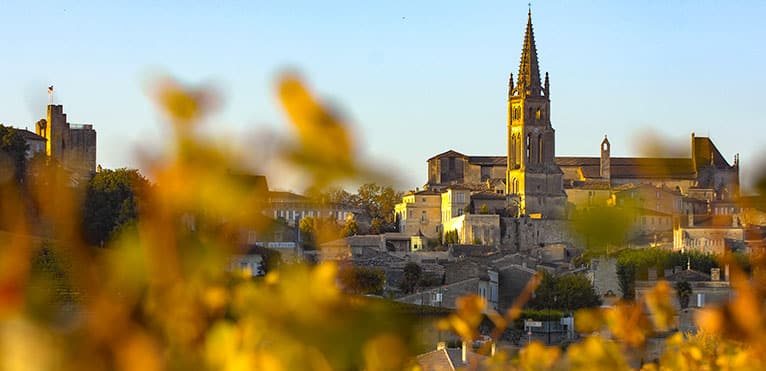
Contents
Entre-deux-mers is an appellation in the Bordeaux region that produces only white wines. It owes its name to its singular geographical position in the region. Bordeaux is a wine-growing region that owes its worldwide renown to its history.
Every year, some 5,983,000 hectolitres of wine are produced from the region’s 38 AOCs. This makes it France’s leading vineyard in terms of volume. Covering an area of more than 117,200 hectares, it abounds in an unparalleled diversity of terroirs. Entre-deux-mers was awarded the AOC label in 1937 and the AOP (Appellation d’Origine Protégée) label in 1941.
The Entre-deux-mers appellation is surrounded by water
The history of Entre-deux-mers is intimately linked to that of its region. Bordeaux vineyards were first cultivated by the Romans in ancient times. Indeed, its proximity to the coast and its exceptional climate make it the perfect terrain for winegrowing. Even then, it was exported to far-flung Roman colonies such as Carthage and Great Britain.
This link with Great Britain was perpetuated in the Middle Ages, when Eleanor of Aquitaine married a Plantagenet. The name Entre-deux-mers first appeared in the Middle Ages, in particular in reference to the triangle formed by the Garonne, the Dordogne and, not far away, the ocean.
The Entre-deux-mers AOC produces sweet and syrupy white wines.
The Entre-deux-mers region is characterized by gently sloping plateaus and outcrops that reveal the erosion of the rocks that make up its soil. The vineyards are located at an average altitude of 140 metres.
The Entre-deux-mers region boasts a multitude of different soils. There are 4 main families. First there are the gravelly and clayey soils on the banks of the Garonne. Then there are the clay soils on the Agenais molasse. Sloping slightly to the south-west, asteriated limestones stand out from soils that were previously not very porous. Lastly, also close to the Garonne, we find soils known as Boulbène, in fact silty-clayey and silty-gravelly, very rich in minerals. This mosaic of soils is highly conducive to good vine drainage. In fact, the porosity of the soil prevents water stagnation and provides the vines with mineral elements.
The climatic conditions enjoyed by the Entre-deux-mers plots are highly conducive to the development of sweet and syrupy white wines. The climate is generally oceanic, mild and temperate. The sunshine is excellent, heating the plots an average of 240 days a year. It is characterized by recurring morning fogs.
Entre-deux-mers, a wine sensitive to different terroirs
Entre-deux-mers is a blended wine, meaning that its charter allows for the use of several grape varieties in its production. The grape varieties used are Muscadelle B, Sauvignon G, Sémillon B and Sauvignon B.
To the eye, Entre-deux-mers can reveal a palette of highly variable colors depending on the terroirs it has grown up in. Nevertheless, its most characteristic color is pale gold. On the nose, it’s very aromatic. It reveals intense fruity and floral primary notes, the heritage of Semillon and Sauvignon in particular. Similarly, depending on the terroir and the vintage, Entre-deux-mers can reveal much stronger notes with exotic undertones.
As with all Bordeaux white wines, the mouthfeel of Entre-deux-mers also varies according to terroir. Wines made from predominantly clay-limestone soils, considered to be the best, reveal the balance and body of the palate, and the finesse of the bouquet that can be discerned on the nose. The clayey-siliceous soils give the wines a full, flowing character that can be summed up as: more present on the palate than on the nose. Boulbènes, the last soil category mentioned, gives the wine a more delicate, softer palate, contrasting with the power of the bouquet and its floral freshness.
Entre-deux-mers and iodized flavours
Entre-deux-mers is predominantly a still dry wine, although it can sometimes be sweet.
Entre-deux-mers blends perfectly with the flavors of the sea. The freshness of the floral bouquet enhances the iodized flavors. Pair it with shellfish, seafood or simply grilled fish. Overcooked dishes or those with sauces can upset this balance. Why not pair it with oysters, a scallop aumônière, a Norwegian platter, crab cake or squid.
An even distribution of vintages
The best vintages are definitely post-war and from the 1990s: 1945, 1947, 1949, 1955, 1959, 1971, 1986, 1988, 1989, 1990, 1995, 1996. It is worth noting that 2009 is a millennium vintage.
Environmentally-friendly Entre-deux-mers estates
Castelneau Castle
Castelneau has been a wine-growing region since the 12th century. The Cartulaire de l’abbaye de la Sauve Majeure records an exchange of plots of land for vines in 1185. Today, this Entre-deux-Mers estate is divided into three parts: the first is dedicated to vinification, the second to conservation and the third to ageing.
The de Roquefeuil family cultivates three types of production on the estate’s hundred hectares in symbiosis: a wooded perimeter surrounds the estate. Some forty hectares are planted with cereals and thirty hectares with vines.
Quality is at the heart of the de Roquefeuil family’s concerns, thanks to their training in oenology and the abandonment of all chemical inputs.
Quancard horse
A winemaker and wine merchant since 1844, Domaine Cheval Quancard offers a wide range of Bordeaux wines, including Entre-deux-mers. For several years now, the estate has been committed to an environmentally responsible approach.
In concrete terms, this means effluent treatment, as well as monitoring and controlling energy consumption. The estate also converted to organic farming in 2007, making Cheval Quancard a forerunner in its field.